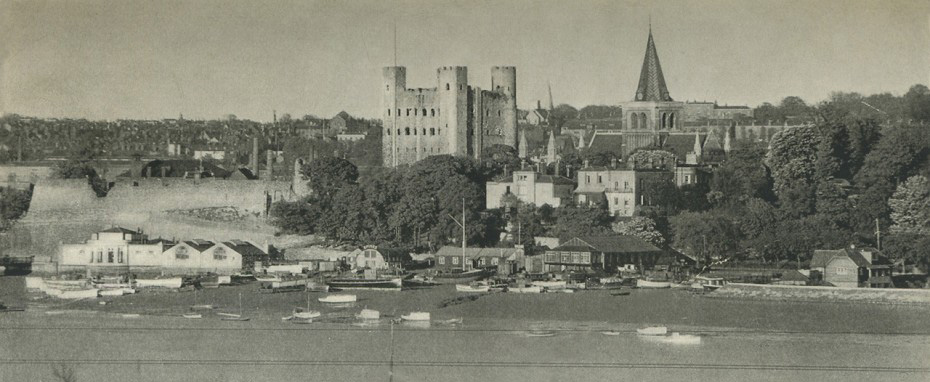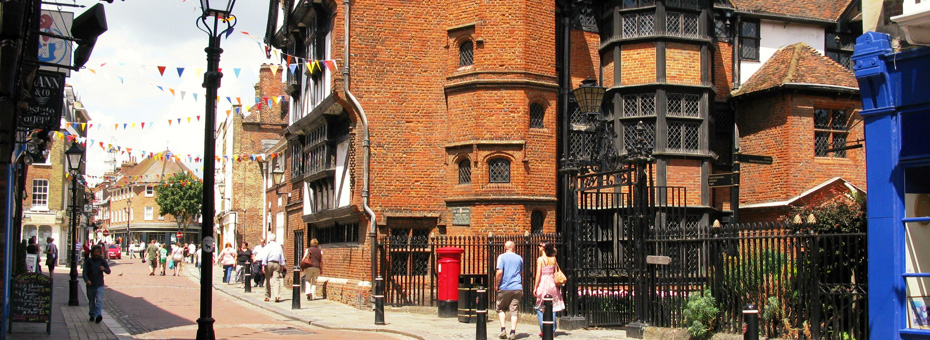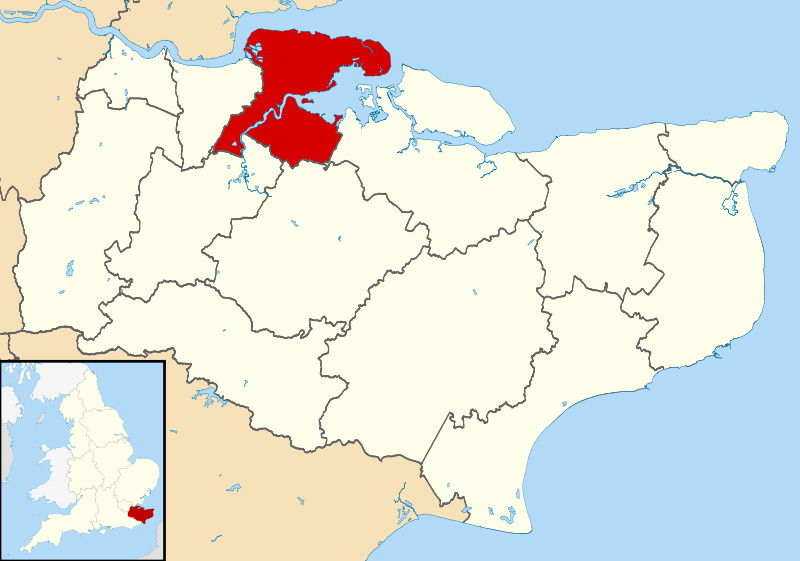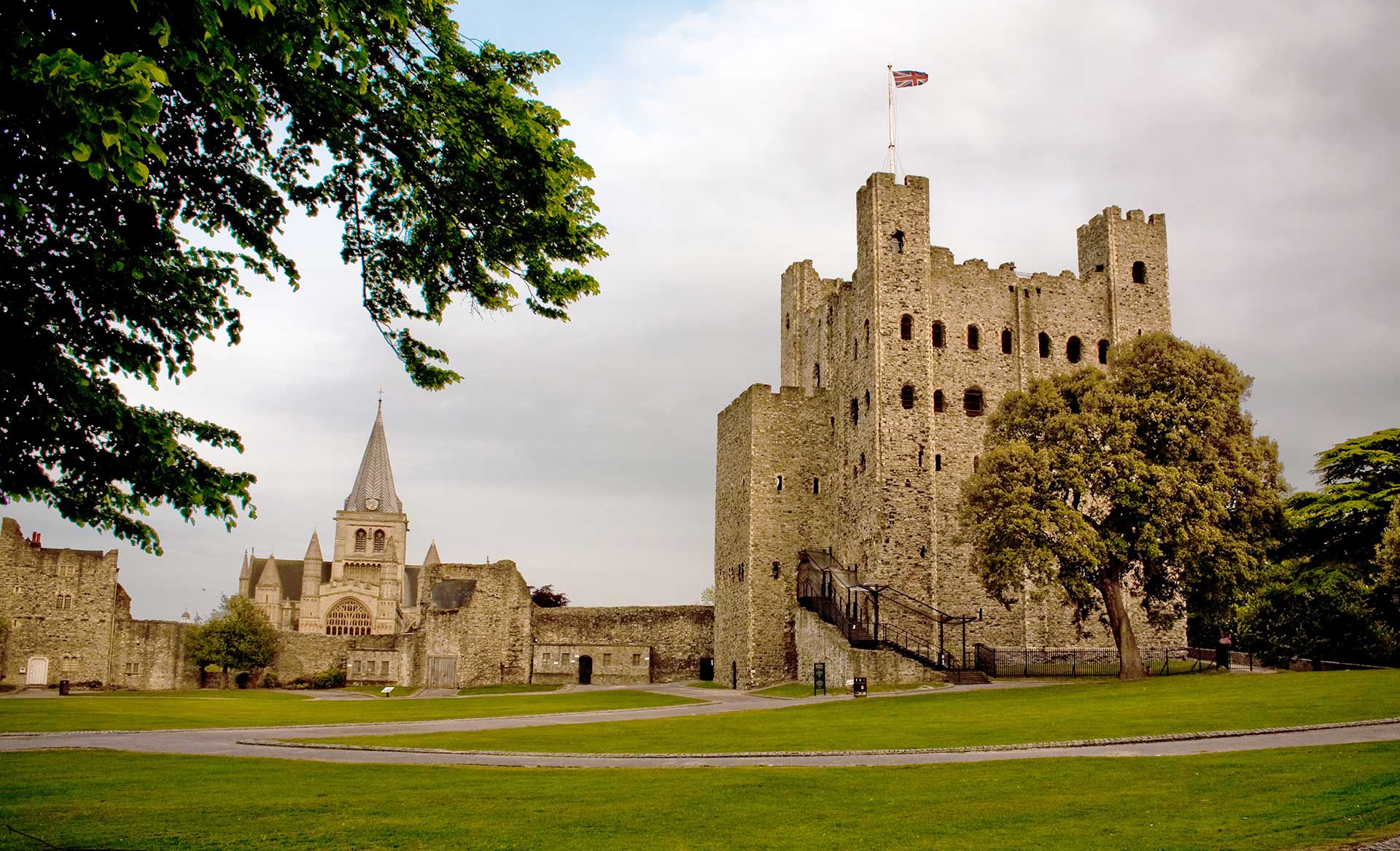The Medway Towns lie clustered around the estuary of the River Medway, approximately half way along the North Kent coast. The river got its name from the Saxon “med” meaning “middle”.

Rochester Castle and Cathedral across the River Medway (Source: City of Rochester Society http://www.city-of-rochester.org.uk)
The Medway Towns consist of Rochester, Chatham, Gillingham, Strood, Rainham and various outlying villages on the Hoo Peninsular, including Grain. Each of the towns has its own distinct character and history.
Watling Street, the Roman Road from Dover to London, runs through the middle of them, entering at Rainham, running through South Gillingham, down Chatham Hill, along New Road in Chatham, along Rochester High Street, across Rochester Bridge, and out through Strood. It is now known in various parts as the A2, Watling Street, Sovereign Boulevard, London Road, High Street and, to most of the locals, “The Top Road”.
Medway covers a large area, and has a large and diverse population (over 250,000 people). It has been populated since Saxon times, and there are many things to see. Rochester is steeped in history and attracts visitors from all over the country.
The castle keep was first built as a wooden structure in 1068 and the stone one was built around 1127 from stone that was quarried in Maidstone. The walls are 12 feet thick and 10 feet at the top. the style is very early Norman and absolutely everything that went into the castle had to go up the steep front steps, including horses.
In 1610 it came out of royal hands and was given to Sir Anthony Weldon.
In the 1700’s it was used as a prison for a while. when it was no longer used, materials were sold or stolen and no re building was ever done on the once majestic building. At one point the Council even tried to knock it down and evidence of this can be seen in the windows which were widened to form very large gaps and this was abandoned as being too difficult. (Thank goodness!)
The gate and steps to the front were built in the 1880’s by the Council, along with the battlements, to make the castle look more attractive to visitors. Between 1919 and 1931 most of the pleasure gardens that were there were removed and turned into lawn.
Nowadays all sorts of festivals are held in the castle grounds. Medievel markets, fêtes, live concerts, falconry displays, and re-enactment perfomances are just a few examples of this. It is still a great asset for the town.

Eastgate House on Rochester’s High Street (Source: City of Rochester Society http://www.city-of-rochester.org.uk/)
In the past, Rochester had city status but this was lost because the paper work involved was not kept up. Attempts are now being made to get the city status back but the name being banded about now is the City Of Medway and not Rochester. The name Medway is often used for administrative purposes but not such a good idea for a name, we feel. Medway is not a town or a city, it is a river.
The Romans first built a bridge here in 100AD and they set up a small camp and a town. How sad it would be to lose our ties with history if the name of Medway was chosen instead of historic Rochester.
The Medway Towns lie clustered around the estuary of the River Medway, approximately half way along the North Kent coast. The river got its name from the Saxon “med” meaning “middle”.

Rochester Castle and Cathedral across the River Medway (Source: City of Rochester Society http://www.city-of-rochester.org.uk)
The Medway Towns consist of Rochester, Chatham, Gillingham, Strood, Rainham and various outlying villages on the Hoo Peninsular, including Grain. Each of the towns has its own distinct character and history.
Watling Street, the Roman Road from Dover to London, runs through the middle of them, entering at Rainham, running through South Gillingham, down Chatham Hill, along New Road in Chatham, along Rochester High Street, across Rochester Bridge, and out through Strood. It is now known in various parts as the A2, Watling Street, Sovereign Boulevard, London Road, High Street and, to most of the locals, “The Top Road”.
Medway covers a large area, and has a large and diverse population (over 250,000 people). It has been populated since Saxon times, and there are many things to see. Rochester is steeped in history and attracts visitors from all over the country.
The castle keep was first built as a wooden structure in 1068 and the stone one was built around 1127 from stone that was quarried in Maidstone. The walls are 12 feet thick and 10 feet at the top. the style is very early Norman and absolutely everything that went into the castle had to go up the steep front steps, including horses.
In 1610 it came out of royal hands and was given to Sir Anthony Weldon.
In the 1700’s it was used as a prison for a while. when it was no longer used, materials were sold or stolen and no re building was ever done on the once majestic building. At one point the Council even tried to knock it down and evidence of this can be seen in the windows which were widened to form very large gaps and this was abandoned as being too difficult. (Thank goodness!)
The gate and steps to the front were built in the 1880’s by the Council, along with the battlements, to make the castle look more attractive to visitors. Between 1919 and 1931 most of the pleasure gardens that were there were removed and turned into lawn.
Nowadays all sorts of festivals are held in the castle grounds. Medievel markets, fêtes, live concerts, falconry displays, and re-enactment perfomances are just a few examples of this. It is still a great asset for the town.

Eastgate House on Rochester’s High Street (Source: City of Rochester Society http://www.city-of-rochester.org.uk/)
In the past, Rochester had city status but this was lost because the paper work involved was not kept up. Attempts are now being made to get the city status back but the name being banded about now is the City Of Medway and not Rochester. The name Medway is often used for administrative purposes but not such a good idea for a name, we feel. Medway is not a town or a city, it is a river.
The Romans first built a bridge here in 100AD and they set up a small camp and a town. How sad it would be to lose our ties with history if the name of Medway was chosen instead of historic Rochester.

